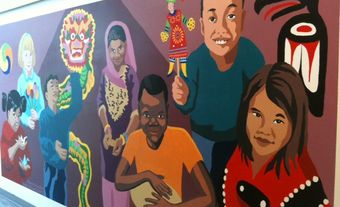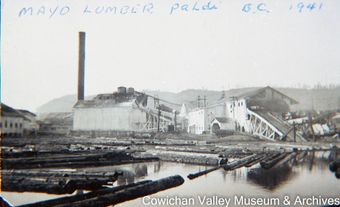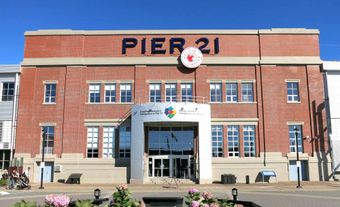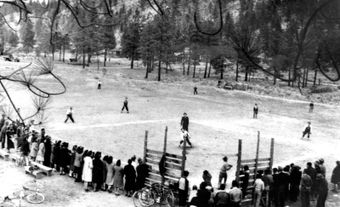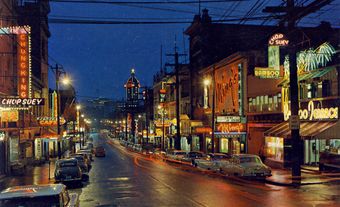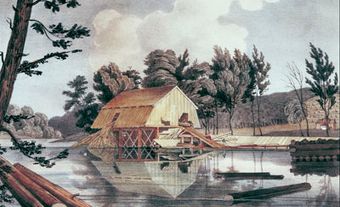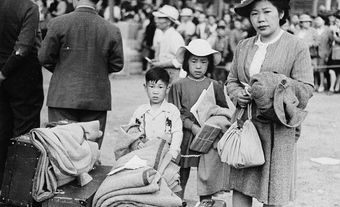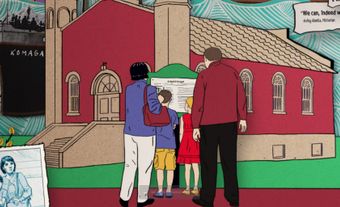Mayan Singh Manhas (Mayo Singh), lumber baron, founder of the Mayo Lumber Company, founder of the town of Paldi, franchise advocate, philanthropist (born 1888 in Paldi, District Hoshiarpur, East Punjab, India; died 23 February 1955 in Paldi, BC). As a founder of the Mayo Lumber Company, Singh became a wealthy lumber baron (see Lumber and Wood Industries). He challenged race-based immigration policies and disenfranchisement. Singh supported hospitals, schools and community projects in his adopted country and his birthplace in India. Paldi, the town he established on Vancouver Island and its gurdwara (temple), remains a cultural and spiritual touchstone for the South Asian community.

Early Years
Mayan Singh sailed from India to San Francisco in 1906, with little formal education or English. He made his way to British Columbia following the path of his older brother, Ganea Singh, and his cousin Doman Singh and then worked for the Canadian Pacific Railway. In the early 20th century, Canadian legislation restricted Asian immigration and anti-immigrant sentiment flourished. Singh arrived in British Columbia, shortly before the violent anti-Asian race riot of 1907 in Vancouver. The riot was caused by the Asiatic Exclusion League, who inflamed resentment of immigrants during a time of recession and high unemployment. ( See also Anti-Asian Racism in Canada.)
Seeking work in the timber industry, Singh (who would become known as Mayo Singh while living in Canada) worked in several sawmills alongside his brother and cousin (see Lumber and Wood Industries). As an entrepreneur, he saw opportunities in the lumber market. When the Rosedale mill where they worked went broke, he formed a partnership with 35 other workers who took over the business.
Mayo Lumber Company
In 1916, Mayo Singh travelled to Vancouver Island in search of timber supply and a new mill site. On behalf of the shareholders, in 1917 he purchased land in the Sahtlam district of the Cowichan Valley. With equipment acquired from the defunct Island Lumber Company, they built the Mayo Lumber Company, a logging operation and sawmill that became operational in 1918 (see Forest Harvesting). Singh hired skilled Japanese workers from the Rosedale mill, as well as South Asian, Chinese and European workers. The settlement that developed around the mill in 1917 would eventually become the village of Mayo and later the village of Paldi.
BC Lumberman magazine and the Cowichan Leader newspaper reported frequently on the business’s operations. As with all mills, fire was a constant threat. Fire devastated the mill in its inaugural year, but it was rebuilt. In 1928, the shareholders were bought out, and Singh eventually came to own the company outright. Operations ceased between 1930 and 1933, due to the Great Depression. In 1933, the Cowichan Leader described Singh as one of Canada’s most prominent lumbermen (see Lumber and Wood Industries). Their report on his contributions to the Ottawa Conference Agreements of 1932 soon led to new contracts, allowing operations to resume. On Christmas Day, 1934, the mill was again destroyed by fire. When the mill was rebuilt in 1935, the operation was renamed Mayo Bros. Timber Ltd. The mill in Paldi closed permanently in 1945, after another disastrous fire destroyed its timber supply. Singh continued in the timber industry in Sooke Lake and Nanaimo.
The Mayo Lumber Company was a successful, South Asian-owned logging and sawmill operation in British Columbia and was active while the lumber industry was expanding to play a major role in the province’s economy. This was a remarkable achievement in the face of exclusionary official measures, such as the Chinese Head Tax. At a time when racialized workers were forbidden to hold skilled positions, the Mayo Lumber Company was an exception as an employer. The Mayo Lumber Company, along with Doman Lumber Industries and Kapoor Lumber Company, emerged as major players in British Columbia’s lumber industry.
Paldi, British Columbia
Mayo Singh, Kapoor Singh Sidhu (Siddoo) and Doman Singh maintained the values of hard work, community service, charity and acceptance of all people. The village that developed around the lumber mill was distinctive for its vibrant, multicultural community of South Asian, Japanese, Chinese and European workers and their families, and notable for its absence of racism. Archival school photographs illustrate the students’ diversity. Everyone in Paldi was invited to the annual Jor Mela, a religious and social celebration, held on Dominion Day. (See also Sikhism in Canada.) The celebration is still held annually on Canada Day, 1 July.
Previously called “Mayo,” the settlement was officially renamed Paldi in 1936, in honour of Singh’s birthplace. By 1937, Paldi’s population was 1,500. The village included a Sikh gurdwara (temple) built in 1919 (rebuilt in the 1930s and in 1959), a Japanese Buddhist temple, a school, a company store and a post office (see Buddhism in Canada).

Advocacy and Philanthropy
Mayo Singh advocated for equal rights, the franchise, full citizenship and the abolishment of racially biased policies and practices for immigrants to Canada (see Human Rights; Right to Vote in Canada; Immigration Policy in Canada). He and others financed a 1939 delegation bound for Ottawa that included Indian lawyer Dr. D.P. Pandia to address injustices by lifting unfair policies, reunifying families and giving voting privileges to all people of Asian ancestry.
After the attack on Pearl Harbour during the Second World War, all people of Japanese ancestry were ordered to be removed from coastal British Columbia, including Singh’s employees and their families. Singh deeply regarded his Japanese workers and their families and offered to take personal responsibility for them, so that they could continue to live in Paldi. He was unsuccessful and Singh’s Japanese employees and their families were evacuated and held temporarily in the animal barns of the Pacific National Exhibition site in Hastings Park, Vancouver (see Internment of Japanese Canadians). Although access to visitors was restricted, Singh delivered supplies to his workers and their families.
Singh gave generously and anonymously to the construction of hospitals and schools in British Columbia and his homeland, and to community organizations and higher education institutions. His son Rajindi Mayo said of his father in a 2008 interview with filmmaker Cynthia Furk, “…his philosophy was no matter how much money you’ve got, you’re not going to eat any better or dress any better than the person next door to you, and he always looked to the underprivileged people to try and help them.” Singh died at his home in Paldi in 1955.
Personal Life
Mayo Singh immigrated to Canada when the country was enacting strict immigration regulations, which separated many men from their families (see Immigration Policy in Canada; Immigration to Canada). In 1919, legislation was revised, allowing South Asian women to immigrate. Singh married Bishan Kaur (circa 1910–52) on a trip to India in 1925. They had eight children.

Legacy
Mayo Singh played a significant role in establishing lumber and sawmill operations that contributed to the economic wealth of the province, despite oppressive and discriminatory policies and attitudes (see Lumber and Wood Industries). The tight-knit community of Paldi is remembered for its racial tolerance and acceptance of all. The Paldi gurdwara is all that remains of the once thriving logging community, but a deep connection to its pioneering ancestors draws hundreds of visitors every year. During the temple’s three-day centennial celebration in 2019, it was estimated by Davinder Mayo, president of the gurdwara, that thousands of people of South Asian, Japanese, Chinese and European ancestry from around the world made a pilgrimage to the site.

 Share on Facebook
Share on Facebook Share on X
Share on X Share by Email
Share by Email Share on Google Classroom
Share on Google Classroom
